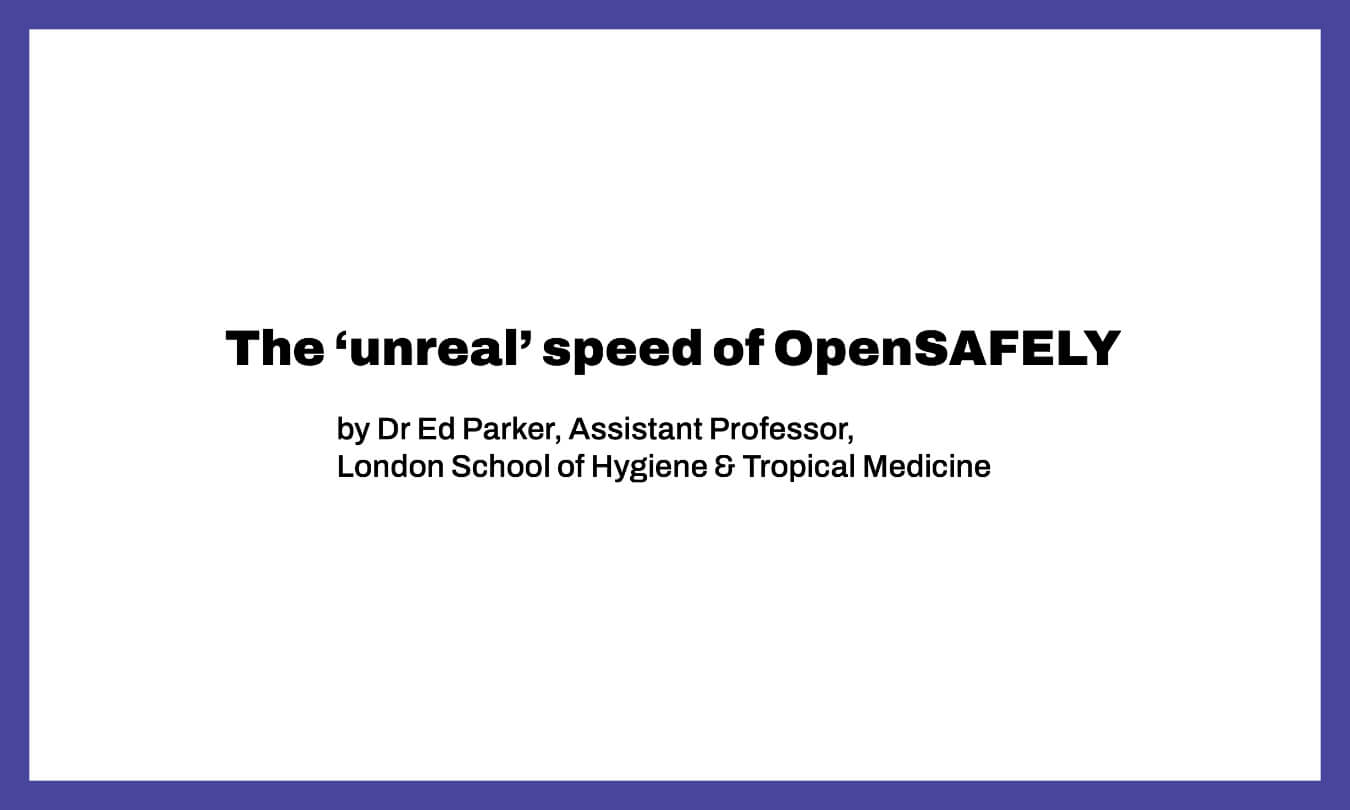This article is part of a series: The Past, Present and Future of OpenSAFELY
- The past, present and future of OpenSAFELY: Introduction
- How OpenSAFELY works
- Co-pilots give newcomers a helping hand
- Standard tools for data preparation, and federated analytics
- Output checking helps to keep private data safe
- The legal basis: ethics, controls and building trust
- Earning and maintaining trust: PPIE and more
- How OpenSAFELY began
- Consequences of COVID-19 and the role of vaccination
- “No other platform comes close”
- The 'unreal' speed of OpenSAFELY
- Using OpenSAFELY to fight antimicrobial resistance
- OpenSAFELY and antibiotics
- Using OpenSAFELY to carry out a randomised trial
- The OpenSAFELY Collaborative
- Some reflections about funding
- What's next for OpenSAFELY?
Written by Dr Ed Parker, London School of Hygiene and Tropical Medicine
It was clear from the early days of the COVID-19 pandemic that people with kidney disease were particularly vulnerable to the effects of the virus.
That’s why these people were among the first to be offered vaccines when they became available. They’ve since been offered extra booster doses for further protection.
We were interested in finding out the effects of different vaccines (specifically those developed by AstraZeneca and Pfizer) during the early stages of the vaccine rollout. We found that after two doses, the AstraZeneca vaccine was slightly less effective than the Pfizer vaccine at preventing infection, hospitalisation, and death among people with kidney disease. But when the same group was given a third dose of the Pfizer vaccine, regardless of which vaccine they’d been given initially, the playing field was levelled. The third dose seemed to close the gap in protection. All of this played out between the spring and winter of 2021, when the Delta wave of the virus was dominant, and just as the Omicron variant took over towards the end of the year. Our work helped highlight the value of additional doses of RNA vaccines in those at highest risk of COVID-19.
What was important here was access to the right sort of data, at the right sort of scale. That’s where OpenSAFELY was really powerful – it gave us access not just to 24 million up-to-date patient records from GPs via OpenSAFELY-TPP, but also to data in the UK Renal Registry, which keeps a record of every patient on dialysis, or who has received a kidney transplant.
Stitching these two datasets together was the best way to accurately identify people with severe kidney disease before looking at the effectiveness of different vaccines. OpenSAFELY was the only platform that gave us all the necessary data in one place.
I was mentored throughout this work by Laurie Tomlinson at the London School of Hygiene & Tropical Medicine, and got a lot of help and input from other collaborators, including the Electronic Health Records Research Group here at LSHTM, the UK Renal Registry, the University of Bristol, and the team at the Bennett Institute.
I’m a data scientist so I felt comfortable writing code, but things were made easier because there was already so much existing code for key steps in the analysis. I could take code that someone had written to ask one question, and repurpose it to ask another. When I got stuck with anything, the Bennett team was on hand with support – a quick 10-minute call and job done, we could move on.
I couldn’t believe how fast it was – I started in January 2022 and had a paper online by June. That’s unreal in my experience.
OpenSAFELY might feel daunting at first, but I’d say it’s as accessible as you could hope for considering the complexity of the data involved. As a vaccine researcher, I have felt very privileged to use OpenSAFELY to address public health issues related to the uptake and effectiveness of COVID-19 vaccines in different groups.



